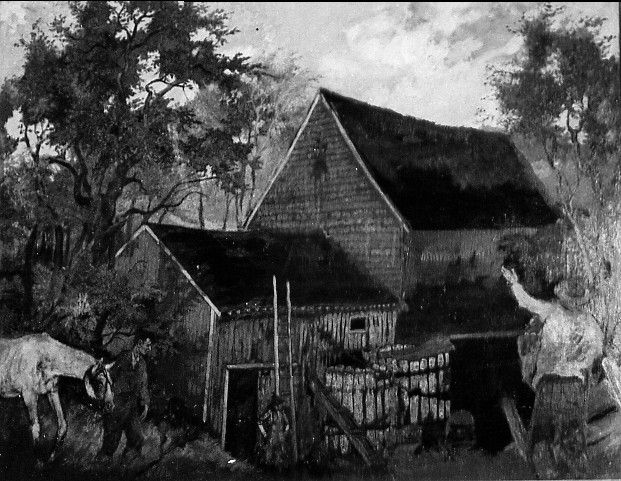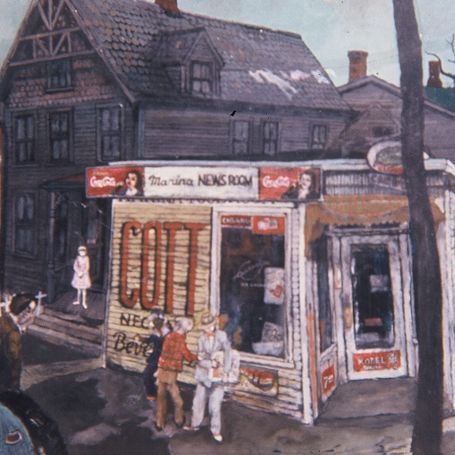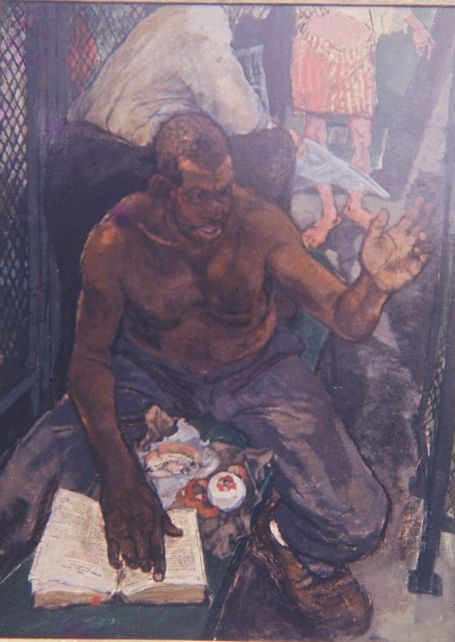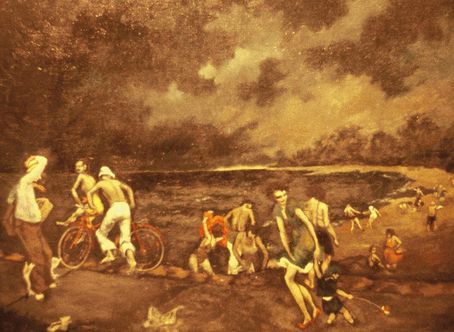Early Career
Bernard Riley was born in 1911 and spent his childhood on the colorful streets of the proud, working-class neighborhood in Bridgeport Connecticut. One thinks of his adventuresome youth as something like a Huck Finn. The winter quarters of the Barnum and Bailey circus was in the next block. per-forming, and he managed to earn a few dollars by gilding the acrobats.
At Bridgeport's Central High School he became an industrious designer and builder of stage sets for the school's prize-winning plays. Riley painted signs, illustrated catalogues, arranged window displays, cartooned for local newspapers, and put his hands on anything offering a creative challenge. He felt lucky to land a temporary job as a lab technician during the pit of the Great Depression. He spent the next 41 years working forty hours per week at Handy and Harman in Fairfield, Connecticut, yet without sacrificing the precious time for his art. For 20 years he painted in a damp basement, in 1965 he designed and constructed a studio attached to his garage
While he was stationed at the Philadelphia Naval Hospital during World War II, Riley taught art to returning amputees as a part of their rehabilitation. He credits the Navy for sending him to Temple University where he was trained in surgical anatomy for purposes of physical therapy. In his daily activities working with the handicapped, and from his anatomical studies with cadavers, Riley feels he gained a solid grounding in classical anatomy.
With no formal training, he first started painting the scenes he knew from the south side of Bridgeport - the rather tattered newsboys with their mongrel dog in front of an old building, the short-order counter or bar lit up of a dark evening,
In 1938 he married Marie Roder, they remained married until his death. In 1948 they had a son John

"These paintings are all related to my own environment. This is Seaside Park. As you can see it's a thunderstorm coming up. I discovered that the people seem to be festival and so I called it holiday."

J Street 1952
"This this this was a kind of discovery because here I began to realize that the picture wasn't as important to me as what was happening as it went along.
The picture began to dictate to me.
I found that that to paint freely and without any pre planning now this happens to be the same sort of thing as the earlier paintings.
It's part of the environment. Part of the things that surrounded me. I knew very well this was the corner I called quality painting. J street. And it was part of it was really Johnson St. and Ridge Ave
In this case, painting from memory is corner of Johnson St. I thought I suddenly discovered this little figure of the girl. Being painted into it with their pink little coat and white gloves and looking like a little blossom here on this rather grim shabby rundown corner.
The story then began to. Develop in my own mind from the painting rather reading back into the painting, something had just happened there by accident. This little girl just came to be there and from that the story of the moment. I thought of it as Easter Sunday. Now the little girl shows this in her brand new clothes and bright pink. The man standing or leaning against an old beat up car is unaware probably that it is even Easter Sunday.
The three little boys there. Two of them are dressed in ordinary Everyday clothes. But the third little boy with the Sunday newspapers is dressed partly for Easter Sunday too. And the lady walking around the corner on Ridge. With a pot of flowers, also part of the Easter Sunday scene."

Not in Bread Alone 1955
"This was a man that was well over 6 foot tall weighed well over 200 pounds. And I worked with him at Handy and Harman and Fairfield. He used to sit in what we call the changing room and have his lunch there and he always had the Bible with him. And if you passed by him, he would just hold you up and he'd preach from the Bible. And I, I've I've just sort of picked up the title of not in bread alone from that. He has a really a very, very nice man and unfortunately died at a very early age. This painting was in the collection of Corcoran Museum in Washington D.C."
Painting of men awaiting execution in Cuba shortly after Castro came to power. The painting was purchased by Washington D.C. court.

© Copyright. All rights reserved.